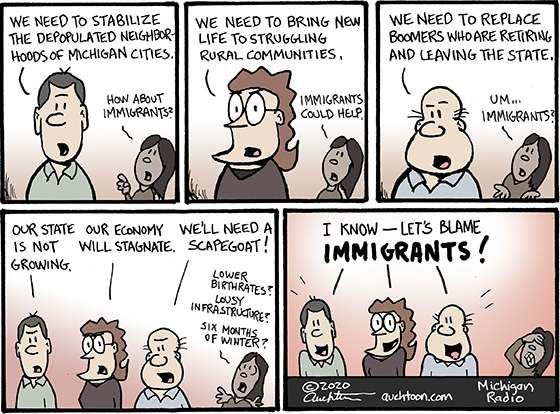How About Immigrants?

Do me a favor. Open up Google Earth and go to Hamtramck, Michigan. (Go ahead — if you’re working, it’s still basically the holidays, so your boss won’t mind a quick diversion.) Notice the tightly packed rows of homes. Now go south past the GM plant (Poletown). Notice the immense space, the only occasional batch of houses, the vast emptiness. Zooming in to both places tells even more of the story: Hamtramck is a viable community, Poletown is not.
What happened? Well, lots of things. But the obvious difference maker is that in Hamtramck as most of its original population of Polish immigrants moved on, new immigrants moved in. In Poletown residents moved on and nobody replaced them, so it died.
Michigan Radio had a story this week about the state’s population growth in the past decade. We did grow, but only slightly and not nearly at the rate of most other states. This is a problem. As the article states:
“Population determines Michigan’s political representation in Congress (the state is virtually guaranteed to lose another U.S. House seat after the next census), the amount of federal dollars the state gets for vital services, and leaves the state with an aging workforce and a dwindling number of working-age adults to support them and drive the state’s economy.”
Now of course it’s an oversimplification to say immigration is the sole solution. But a brief look at Michigan history will tell you that immigration has paid our state exponential dividends, despite immigrants themselves often being feared and scapegoated. We have the opportunity in this first year of the new decade to reconsider the benefits of encouraging immigration.

